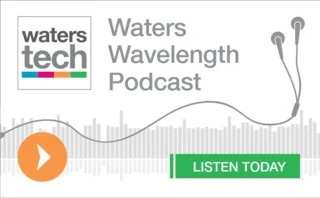Michael Shashoua: AMQP Is Standards’ Latest Challenger

The recent launch of the Advanced Messaging Queuing Protocol adds another contender to the field of several messaging protocols for financial services. Michael considers the attributes of the newest entrant and what it means for true standardization in the industry.
A defining conflict for the financial services industry as it heads into 2012 will be determining which of many messaging standards and protocols should prevail—or whether there needs to be a decisive choice among them in the first place.
This year’s Sibos conference was dominated by discussion of legal entity identifiers (LEIs), expected to be implemented in 2012 at the behest of the US Treasury’s Office of Financial Research, and also expected to eventually spread worldwide as a standard for identifying securities. Sibos also saw ongoing efforts to promote adoption of the ISO 20022 and Extensible Business Reporting Language (XBRL) standards.
Initial Frenzy
Add to the competing field of messaging standards the following acronyms and initialisms: FIX, FIXML, FpML, FAST, TCP and UDP. (I guess FIXML would be part acronym and part initialism, because you pronounce part of it as a word, and the rest as letters—see the “Cheerleaders” episode of Penn & Teller’s entertaining Showtime cable TV series for a discourse on this, referring to a tangle of names of scholastic cheerleading administrative organizations).
Last month saw the addition of one more, the Advanced Message Queuing Protocol or AMQP 1.0, whose developers say it will simplify trading communications, and interactions between risk management systems, as well as reduce the number of destinations a firm has to reach with messages. Hanno Klein, a senior vice president at Deutsche Börse, says AMQP also improves trade confirmation messages and organization of information on trades.
AMQP’s developers sought to meet criteria of applicability, interoperability, manageability and ubiquity, according to Robert Godfrey, a vice president at JPMorgan Chase who works on an integration services team advising and supporting on deployments of AMQP technology at the firm. “AMQP has to be everywhere,” he says. “When people say messaging, they should think of AMQP.”
Everything in Its Place
Although the industry might like to have one all-encompassing universal messaging and identification standard, akin to a universal power plug or outlet, according to Klein’s analogy he provided attendees at the AMQP launch event, there appears to be distinct needs served by each acronym-named standard, which he acknowledges.
“One has to be realistic about what we can do with standards and how fast we can change the community,” says Klein. “We started in settlement with Swift, ISO 15022 and now 20022 messages. We do a lot with FIX protocol—FIXML being XML syntax for FIX. FpML is more for the over-the-counter (OTC) space where it’s about describing very complex products, which are actually contracts between parties. We use FAST in market data for bulk data on order books, trades, reference data and the like for trading.”
So, can the financial industry be like electrical power outlets when it comes to standards—accommodating multiple formats within one universal framework (if that’s enabled by adapters), or should it be more like the governance of internet addresses, regulated worldwide by ICANN in the form of IP addresses?
That depends on the securities industry’s ability to produce a code or set of standards that could include every one of the aforementioned formats and connect them seamlessly together. The performance of AMQP will determine whether it can be that ubiquitous umbrella, or at least pave the way to the interoperability its developers envision.
Only users who have a paid subscription or are part of a corporate subscription are able to print or copy content.
To access these options, along with all other subscription benefits, please contact info@waterstechnology.com or view our subscription options here: https://subscriptions.waterstechnology.com/subscribe
You are currently unable to print this content. Please contact info@waterstechnology.com to find out more.
You are currently unable to copy this content. Please contact info@waterstechnology.com to find out more.
Copyright Infopro Digital Limited. All rights reserved.
As outlined in our terms and conditions, https://www.infopro-digital.com/terms-and-conditions/subscriptions/ (point 2.4), printing is limited to a single copy.
If you would like to purchase additional rights please email info@waterstechnology.com
Copyright Infopro Digital Limited. All rights reserved.
You may share this content using our article tools. As outlined in our terms and conditions, https://www.infopro-digital.com/terms-and-conditions/subscriptions/ (clause 2.4), an Authorised User may only make one copy of the materials for their own personal use. You must also comply with the restrictions in clause 2.5.
If you would like to purchase additional rights please email info@waterstechnology.com
More on Regulation
Why source code access is critical to DORA compliance
As DORA takes hold in EU, Adaptive’s Kevin Covington says that it is shining a light on the criticality of having access to source code.
Nasdaq’s blockchain proposal to SEC gets mixed reviews from peers
Public comment letters and interviews reveal that despite fervor for tokenization, industry stakeholders disagree on its value proposition.
FCA files to lift UK bond tape suspension, says legal claims ‘without merit’
After losing the bid for the UK’s bond CT, Ediphy sued the UK regulator, halting the tape’s implementation. Now, the FCA is asking the UK’s High Court to end the suspension and allow it to fight Ediphy’s claims in parallel.
Treasury market urged to beef up operational resilience plans
NY Fed panel warns about impact of AI and reliance on critical third parties.
Technology alone is not enough for Europe’s T+1 push
Testing will be a key component of a successful implementation. However, the respective taskforces have yet to release more details on the testing schedules.
Waters Wavelength Ep. 338: BBH’s Mike McGovern
This week, Mike McGovern of Brown Brothers Harriman talks with Tony about the importance of open architectures and the need for better data management in this increasingly AI-driven world.
Plaintiffs propose to represent all non-database Cusip licensees in last 7 years
If granted, the recent motion for class certification in the ongoing case against Cusip Global Services would allow end-user firms and third-party data vendors alike to join the lawsuit.
S&P shutters NMRF solution amid audit questions
Vendors face adverse economics due to a low number of IMA banks and prospects of regulatory easing.








